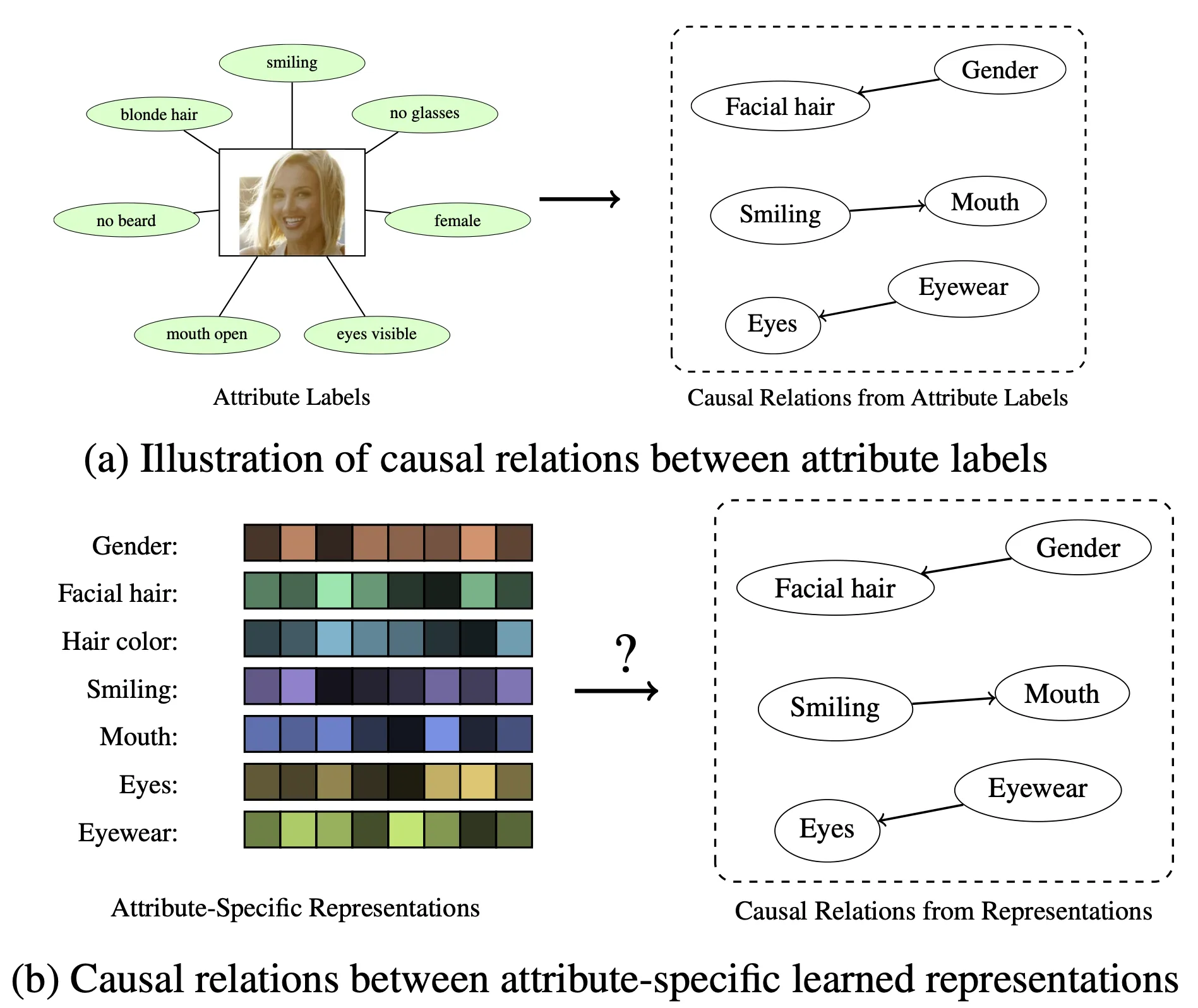Abstract
Data often has many semantic attributes that are causally associated with each other. But do attribute-specific learned representations of data also respect the same causal relations? We answer this question in three steps. First, we introduce NCINet, an approach for observational causal discovery from high-dimensional data. It is trained purely on synthetically generated representations and can be applied to real representations, and is specifically designed to mitigate the domain gap between the two. Second, we apply NCINet to identify the causal relations between image representations of different pairs of attributes with known and unknown causal relations between the labels. For this purpose, we consider image representations learned for predicting attributes on the 3D Shapes dataset, CelebA, and the CASIA-WebFace dataset which we annotate with multiple multi-class attributes. Third, we analyze the effect on the underlying causal relation between learned representations induced by various design choices in representation learning. Our experiments indicate that (1) NCINet significantly outperforms existing observational causal discovery approaches for estimating the causal relation between pairs of random samples, both in the presence and absence of an unobserved confounder, (2) under controlled scenarios, learned representations can indeed satisfy the underlying causal relations between their respective labels, and (3) the causal relations are positively correlated with the predictive capability of the representations.
